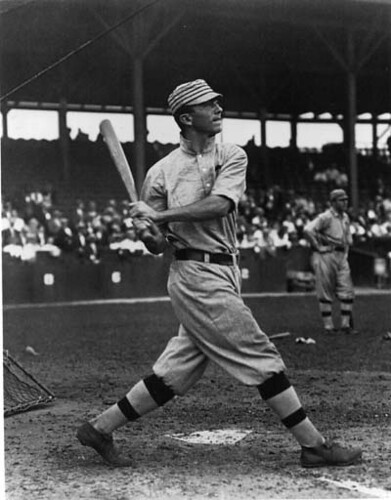What he did: Pujols is building a case he belongs among the all-time greats with his remarkably consistent play. He’s had at least 30 home runs and 100 RBI every year of his career heading into this season and boasts a .332 lifetime batting average, a throwback to an era where sluggers like Babe Ruth and Ted Williams retired with clips above .330.
Pujols has won three National League Most Valuable Player awards, is a nine-time All Star and with another ten years, he might break the home run record. And if Pujols retired tomorrow, he’d still be a Hall of Famer.
Era he might have thrived in: The 1930s
Why: After my column here on Home Run Baker last week, one of my regular readers emailed me, saying he was looking forward to me writing one of these on Pujols. The reader wrote of Pujols:
To my mind, he’s the only [current] right handed hitter who stands a chance of being either the greatest, or second greatest right handed hitter of all time. Put the guy in the 1890’s and he’s Ed Delahanty. Put him in the oughts and teens and he’s Honus Wagner. In the 20’s, Harry Heilmann with close to 40 hrs a year. In the 30’s, he’s Jimmie Foxx, with thirty fewer strike outs a season.
It was an interesting idea, and I happily take requests here. This is still a relatively new enough space that I value — and need — any sign that I’m not just babbling into space. I’d welcome anyone else to get their requests in.
For our purposes, I’ll hypothesize how Pujols might have fared in the 1930s. I envision him on the New York Yankees, a feared American League slugger in the same vein as Foxx, Ruth or Al Simmons. The stat converter on Baseball-Reference says Pujols’ 2009 MVP season would translate to 50 home runs, 158 runs batted in and a .358 batting average for the 1936 Yankees. And his 2003 season converts to a .396 clip for that team.
Pujols would have fit right in on those Yankees who won 102 games and the 1936 World Series. Bill Dickey hit .362, rookie Joe DiMaggio helped fans forget Babe Ruth with 29 home runs and a .323 batting average, and MVP Lou Gehrig put up real-life versions of Pujols’ projected numbers with 49 home runs, 152 RBI and a .354 clip. Taking over for low .300 hitters like Jake Powell or George Selkirk in the Yankee outfield, Pujols most likely boosts the .300 team batting average. I’m not sure if he does anything of note on defense or if the heavier bats of the era help or hurt his cause, but I’m guessing overall, Pujols kicks ass on that team.
Of course, like Al Simmons, Pujols would probably have to Americanize his name playing in a less ethnically tolerant era. Simmons was born Aloys Szymanski. Who knows? Maybe if Pujols had played in the Thirties, we’d know him today as Al Parker.
Any player/Any era is a Thursday feature here that looks at how a player might have fared in a different era than his own.

